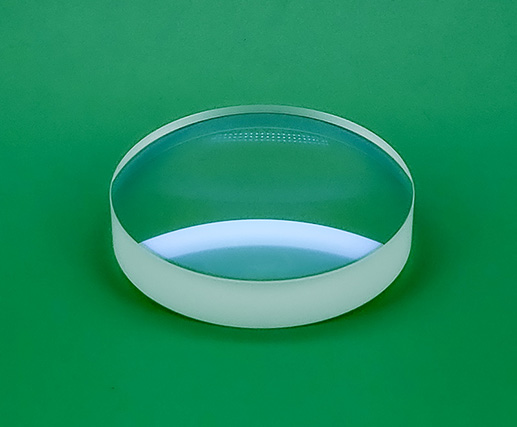Achromatic Lenses
An achromatic lens, also referred to as an achromat, typically consists of two optical components cemented together, usually a positive low-index (crown) element and a negative high-index (flint) element. In comparison to a singlet lens, or singlet for short, which only consists of a single piece of glass, the additional design freedom provided by using a doublet design allows for further optimization of performance. Therefore, an achromatic lens will have noticeable advantages over a comparable diameter and focal length singlet.
An achromatic lens comes in a variety of configurations, most notably, positive, negative, triplet, and aspherized. It is important to note that it can be a doublet (two elements) or triplet (three elements); the number of elements is not related to the number of rays for which it corrects. In other words, an achromatic lens designed for visible wavelengths corrects for red and blue, independent of it being a doublet or triplet configuration.
CLZ Optical Co., Ltd. specialize in manufacturing optical components from customer supplied designs, including a wide variety of Achromatic Lens.We can provide Featuring surface accuracy to less than 0.2 fringe measured at 633nm and finishes to 20-10 scratch-dig per MIL-PRF 13830, the material are fabricated from quartz, optical glass, silicon, etc. and the sizes up to 200mm diameter.
- Spherical Lenses
- Optical Dome
- Cylindrical lenses
- Optical Windows
- Optical Prisms
- Optical Mirrors
- Optical Filters
- UV and IR Optics
- Custom Optics
- Optical Coatings
- Blank Material



















